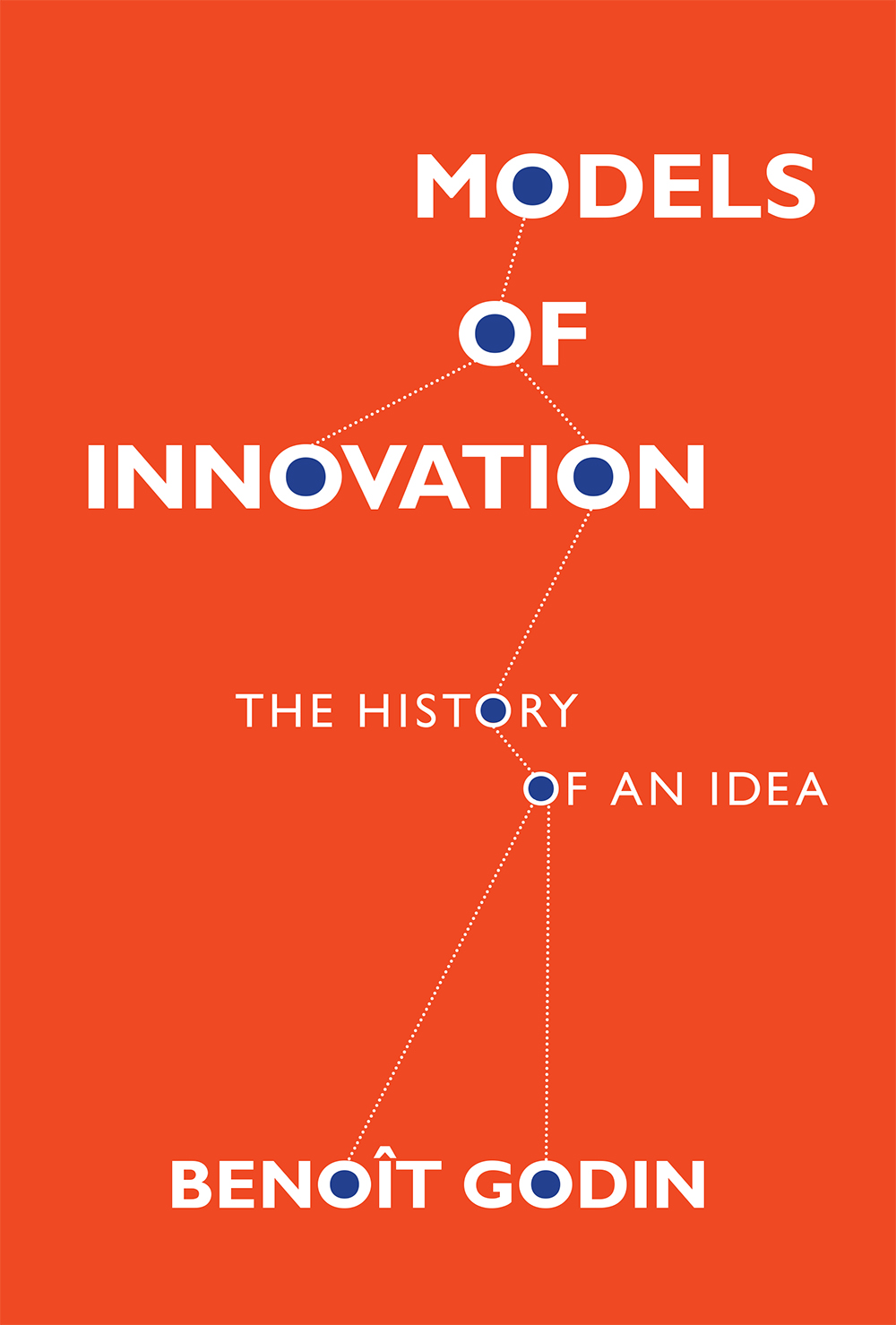B. Godin (2017), Models of Innovation. The History of an Idea. MIT Press eBooks.
Models abound in science, technology, and society (STS) studies and in science, technology, and innovation (STI) studies. They are continually being invented, with one author developing many versions of the same model over time. At the same time, models are regularly criticized. Such is the case with the most influential model in STS-STI: the linear model of innovation.In this book, Benoît Godin examines the emergence and diffusion of the three most important conceptual models of innovation from the early twentieth century to the late 1980s: stage models, linear models, and holistic models. Godin first traces the history of the models of innovation constructed during this period, considering why these particular models came into being and what use was made of them. He then rethinks and debunks the historical narratives of models developed by theorists of innovation. Godin documents a greater diversity of thinkers and schools than in the conventional account, tracing a genealogy of models beginning with anthropologists, industrialists, and practitioners in the first half of the twentieth century to their later formalization in STS-STI.
Godin suggests that a model is a conceptualization, which could be narrative, or a set of conceptualizations, or a paradigmatic perspective, often in pictorial form and reduced discursively to a simplified representation of reality. Why are so many things called models? Godin claims that model has a rhetorical function. First, a model is a symbol of “scientificity.” Second, a model travels easily among scholars and policy makers. Calling a conceptualization or narrative or perspective a model facilitates its propagation.
About the Author
Benoît Godin is a Professor at the Institut national de la recherche scientifique, Montreal.
Endorsements
“Godin’s decade-long study of the history of models of innovation has borne rich fruit. Not only is it the most comprehensive genealogy to date of the concept, revealing its diverse sources in academia, policymaking, and economic practice; it is, at the same time, a penetrating critique of the rhetorical uses and lack of theoretical underpinning of a term that has been attributed strategic importance in science and technology policy for half a century.”
—Peter Weingart, Emeritus Professor of Sociology (of Science), Bielefeld University, Germany; South African Research Chair in Science Communication, Stellenbosch University
“This book is by far the most thorough study of the development of models of innovations available. It widens our understanding of innovation in two important respects. First, it does not limit itself to economics of innovation, or the dominating approach often characterized as evolutionary economics of innovation inspired by the work of Joseph Schumpeter. It also studies the theorizing and uses of innovations in cultural anthropology, sociology, and the management of industrial laboratories of the early 1900s that preceded modern science, technology, and innovation policy. Second, the book traces the emergence of a systems view in industrial research management and in the early science and technology policy of the OECD before the emergence of the national innovation system approach of the late 1980s. It shows how the definitions and classifications created for statistics have influenced how innovations have been understood and defined in policy discourses. With this wide scope the book introduces theorists whose work thus far has remained unnoticed, among them Maurice Holland and William McLaurin.”
—Reijo Miettinen, Emeritus Professor, University of Helsinki

